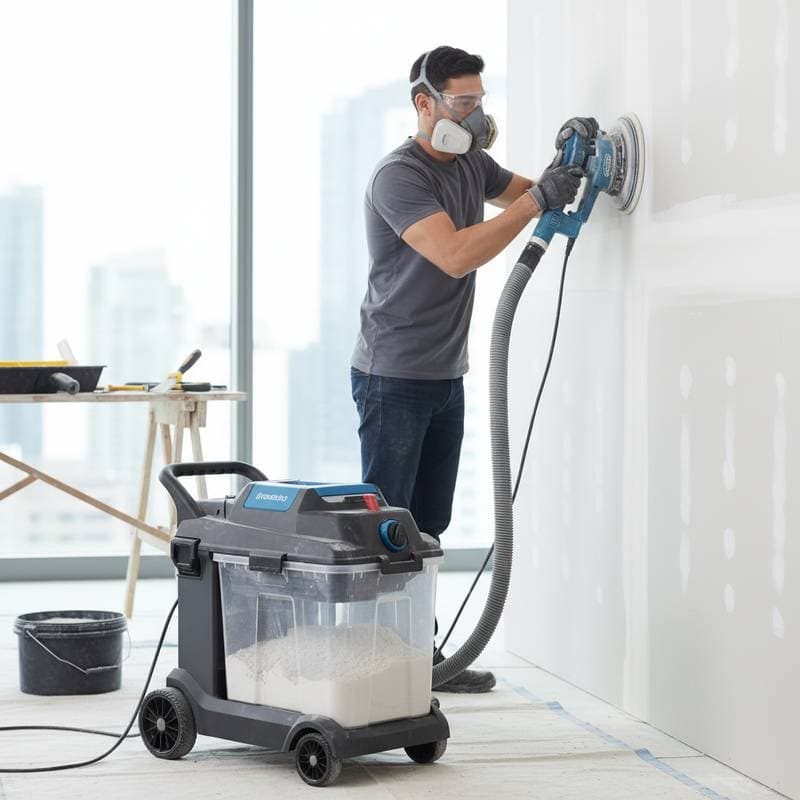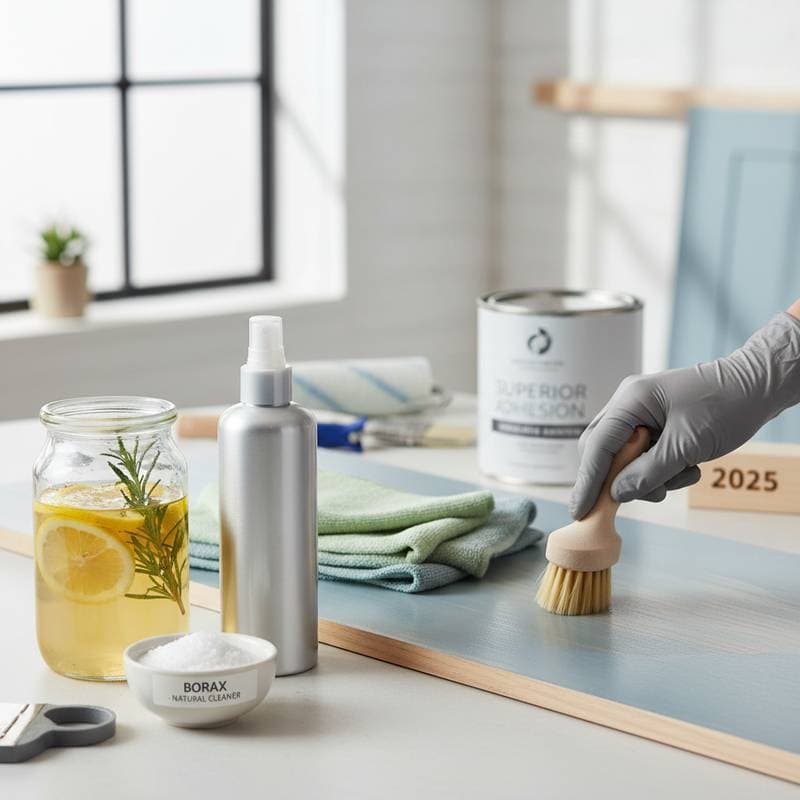Navigating the 2025 TSP Ban: Effective Phosphate-Free Options for Surface Preparation
Trisodium phosphate, known widely as TSP, has served as a reliable cleaning agent for painters and homeowners alike when preparing surfaces for fresh coats of paint. This powerful substance excels at dissolving grease, stripping away stubborn grime, and creating a pristine base for primers and finishes. However, the environmental impact of phosphate runoff has prompted stricter regulations, culminating in expanded bans on TSP by 2025. Professionals and do-it-yourself enthusiasts now seek phosphate-free alternatives that maintain high cleaning standards while safeguarding waterways and ecosystems.
Understanding the Push to Phase Out TSP
The primary concern with TSP lies in its phosphate components, which enter storm drains during rinsing and fuel excessive algae growth in natural water bodies. Such blooms deplete oxygen levels, threatening fish populations and disrupting aquatic habitats. Environmental protection agencies have responded with policies that limit or prohibit phosphate-based cleaners in residential and commercial settings. This transition extends beyond mere regulatory adherence; it fosters practices that preserve water quality and support long-term ecological health.
In regions across the United States, local ordinances and national guidelines accelerate this change. For instance, states with sensitive coastal areas enforce early adoption of alternatives to prevent nutrient pollution. Painters who once relied on TSP for efficiency now appreciate how these restrictions encourage innovation in cleaning formulations that balance performance with planetary responsibility.
Exploring Proven Phosphate-Free Alternatives
Achieving a flawless surface for painting requires rigorous cleaning, and phosphate-free products rise to the challenge without compromising results. These solutions often incorporate biodegradable elements and natural surfactants that penetrate and lift oils, dirt, and residues effectively. Unlike TSP, they break down harmlessly in the environment, reducing the risk of long-term contamination.
Consider these reliable options tailored for paint preparation:
- Borax formulations: These powders mix into solutions that target grease on walls and cabinets, acting gently to avoid surface damage while providing a thorough cleanse.
- Citrus-derived degreasers: Extracted from orange peels or lemon essences, they emulsify contaminants with natural solvents, offering a fresh scent and quick evaporation.
- Vinegar-baking soda mixtures: Ideal for lighter tasks, this combination effervesces to dislodge residues and neutralize odors, serving as a cost-effective household staple.
- Specialized commercial cleaners: Brands formulate these for heavy-duty use, ensuring compatibility with paints and finishes; seek products labeled for pre-paint applications at hardware retailers.
Users report that these alternatives rinse away completely, preventing interference with paint adhesion. Additionally, they pose fewer risks of skin or respiratory irritation, enhancing safety during application in enclosed spaces.
Step-by-Step Guide to Surface Preparation
The core principles of preparing surfaces remain consistent, even with new cleaning agents. Proper execution guarantees that paint adheres evenly and endures over time, whether on interior walls, wooden trim, or exterior siding.
Follow this structured approach:
- Clear away loose debris: Use a soft brush, vacuum, or microfiber cloth to eliminate dust and flaking material from the surface.
- Select and apply cleaner: Dilute the product as directed, then apply it evenly with a non-abrasive sponge or cloth, focusing on soiled areas and allowing dwell time for maximum efficacy.
- Rinse meticulously: Employ fresh water from a spray bottle or hose to wash off all traces of cleaner and loosened grime, inspecting for completeness.
- Dry fully: Permit air drying or use fans to accelerate the process, ensuring no moisture remains before proceeding to sanding or priming.
Neglecting any phase invites issues such as bubbling paint or premature wear. Testing a small, inconspicuous area first confirms compatibility and reveals any potential reactions.
Evaluating Costs, Performance, and Practicality
Phosphate-free cleaners align closely with TSP in affordability, typically costing between $10 and $25 per gallon for ready-to-use versions. Concentrates stretch further, often producing several gallons from a single bottle through simple dilution, which offsets initial outlays over multiple projects. Although certain formulations might demand additional agitation for heavy buildup, the trade-off proves worthwhile given their reduced health hazards and eco-credentials.
Performance testing in real-world scenarios shows that citrus options excel on lipid-rich surfaces like kitchen backsplashes, while borax suits broader applications on drywall. Homeowners benefit from lower disposal concerns, as these products comply with wastewater treatment standards more readily than phosphates.
Selecting and Implementing the Ideal Cleaner
Tailor your choice to the project's demands, considering factors like surface material and contamination severity. For instance, opt for a robust citrus degreaser on oil-stained garage doors, whereas a milder borax solution suffices for routine interior refreshes. Always review product labels for dilution ratios and safety precautions to optimize results.
Integrating these alternatives into routines not only ensures compliance with 2025 regulations but also elevates project outcomes. Painters gain a competitive edge by demonstrating environmental stewardship, appealing to clients who prioritize sustainability.
Frequently Asked Questions
What prompted the restrictions on TSP?
Regulatory bodies imposed limits on TSP because its phosphates exacerbate water pollution by promoting algal overgrowth. These measures aim to restore balance in rivers, lakes, and oceans while encouraging cleaner alternatives.
Do phosphate-free options perform comparably to TSP?
Absolutely, contemporary formulations achieve equivalent cleanliness levels. They may necessitate brief extra effort in some cases, yet deliver superior safety and environmental compatibility.
Is TSP still accessible for personal use?
Availability varies by location, with many suppliers phasing it out in favor of substitutes. Check local stores for compliant products that uphold professional standards.
Which surfaces suit eco-friendly cleaners?
They handle common substrates including drywall, wood, masonry, and metals effectively. Conduct a spot test on finished or sensitive areas to verify colorfastness.
How do you handle wastewater from cleaning?
Direct rinse water to indoor plumbing connected to treatment facilities, bypassing storm drains to avoid environmental release.
Have professional painters adopted these changes?
Indeed, leading contractors prioritize phosphate-free solutions to align with regulations, protect worker health, and satisfy eco-conscious clientele.
Transitioning to Sustainable Practices for Lasting Results
Embracing phosphate-free cleaners marks a pivotal step toward responsible painting. These products not only meet the demands of the 2025 TSP ban but also enhance safety, efficiency, and ecological integrity. By adopting them, individuals contribute to cleaner communities while achieving professional-grade finishes that stand the test of time.



